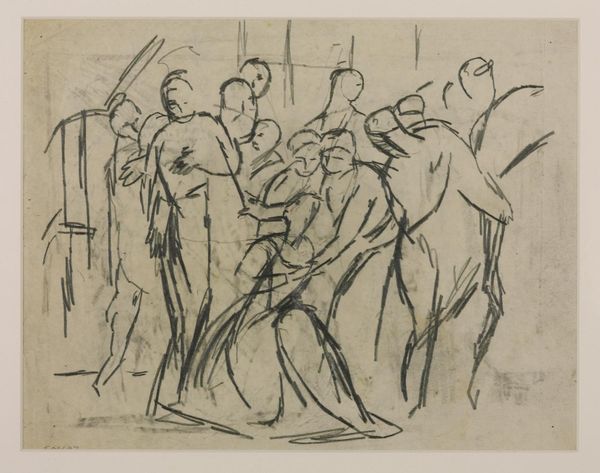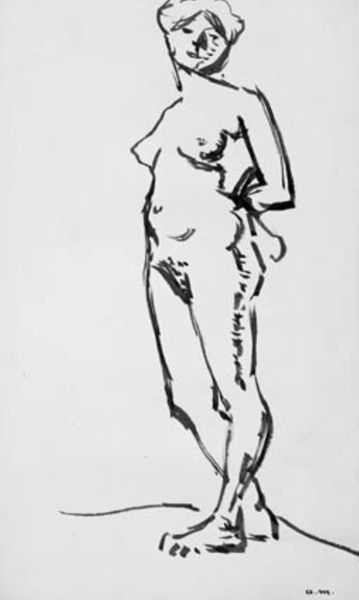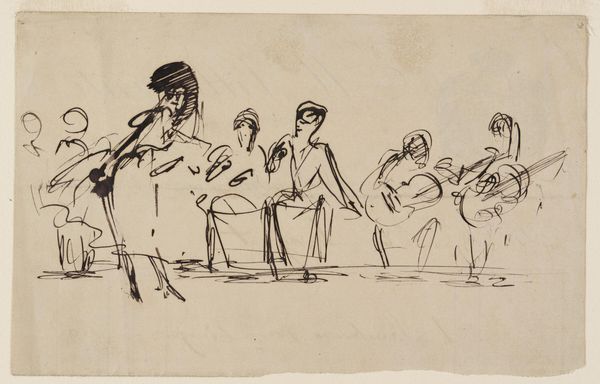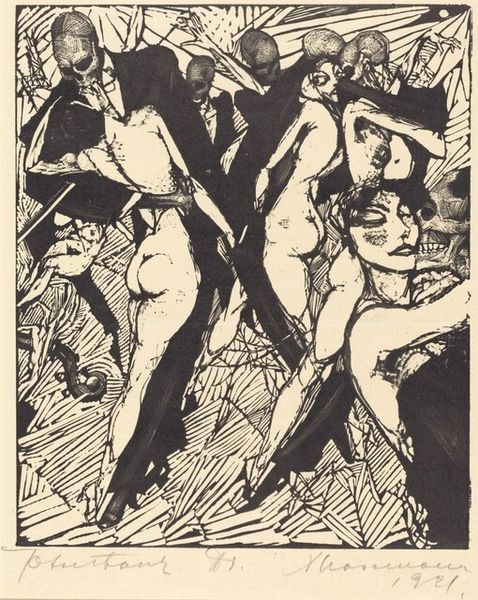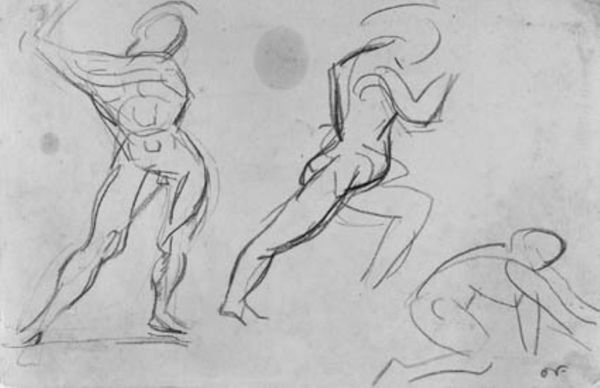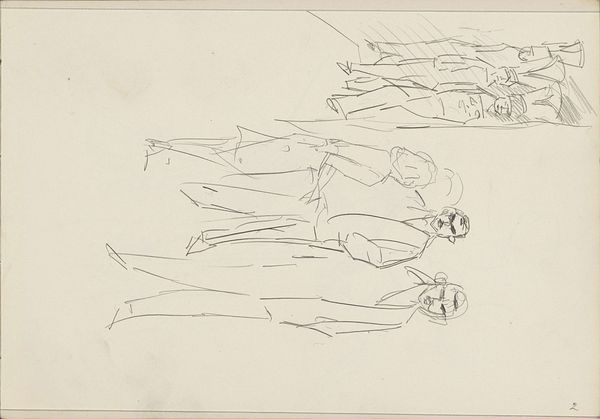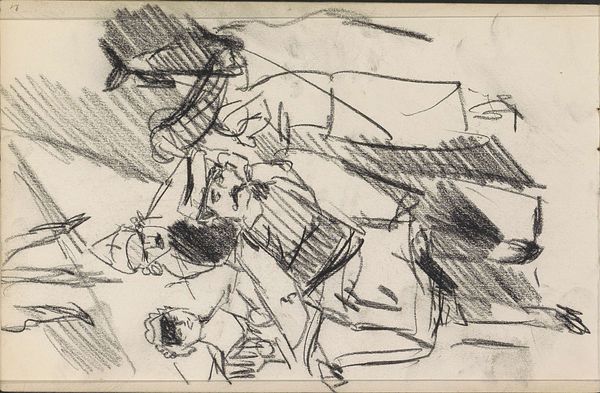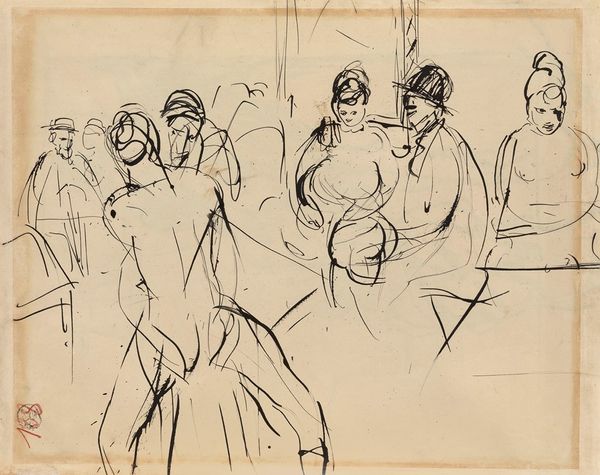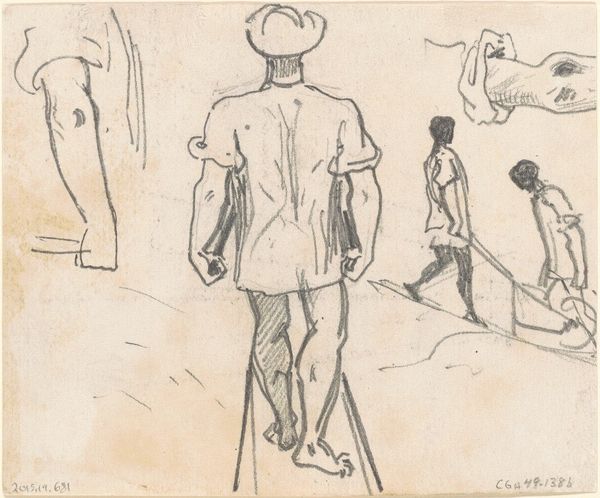
Dimensions: 121 mm (height) x 237 mm (width) (bladmaal)
Curator: Let's discuss "Ceifadorenes dans. Coïmbra, Portugal.," a drawing created by Othon Friesz between 1911 and 1912. Editor: My first impression is a feeling of unbridled joy, almost bacchanalian. The stark lines give it a rawness, a sense of immediacy. It feels unfinished yet incredibly lively. Curator: Absolutely, the composition is dynamic. Notice how Friesz uses contour lines and rapid strokes to suggest movement, rather than meticulously defining forms. The figures emerge from the negative space, their energy palpable. Editor: But it's not just energy; it’s specifically *laboring* energy turned into social celebration. Knowing it depicts reapers in Coimbra suggests a commentary on rural life, perhaps an idealized vision of the working class at leisure, celebrating a bountiful harvest and shared labor. How might social structures and power dynamics factor into this communal dance? Curator: That reading has some validity; however, to analyze it strictly in those terms risks overlooking its formal strengths. Look at how the artist organizes this action: see the bold simplicity of line, the subtle layering that produces depth, and that essential semiotic device of contrast. Editor: That bold contrast underscores a kind of harshness, actually—it mirrors the hardships inherent in agricultural work and even the celebration. It's interesting to note how Friesz situates his dancers amidst the broader political and social upheavals in early 20th-century Europe. Is this celebratory rendering perhaps an escape from growing turbulence? Curator: Whether an escape or reflection, his engagement with Impressionism filters through. Friesz prioritizes visual sensation and direct expression. Editor: I wonder how contemporary Portuguese viewers received it? I imagine it struck a chord—connecting themes of folk identity to Impressionist form that speaks of something urgent, an energetic and maybe political pulse—it has less of the dreamy quality that makes "Impressionism" such an aesthetic category for our distance, our moment. Curator: Regardless of specific intent, it succeeds in visually capturing fleeting emotions. A drawing imbued with dynamism, encapsulating joy in simplicity of means, is no small feat. Editor: Ultimately, Friesz's dance resonates, then and now, because it speaks of human connection forged in the crucible of collective endeavor, regardless of context or intent.
Comments
No comments
Be the first to comment and join the conversation on the ultimate creative platform.

